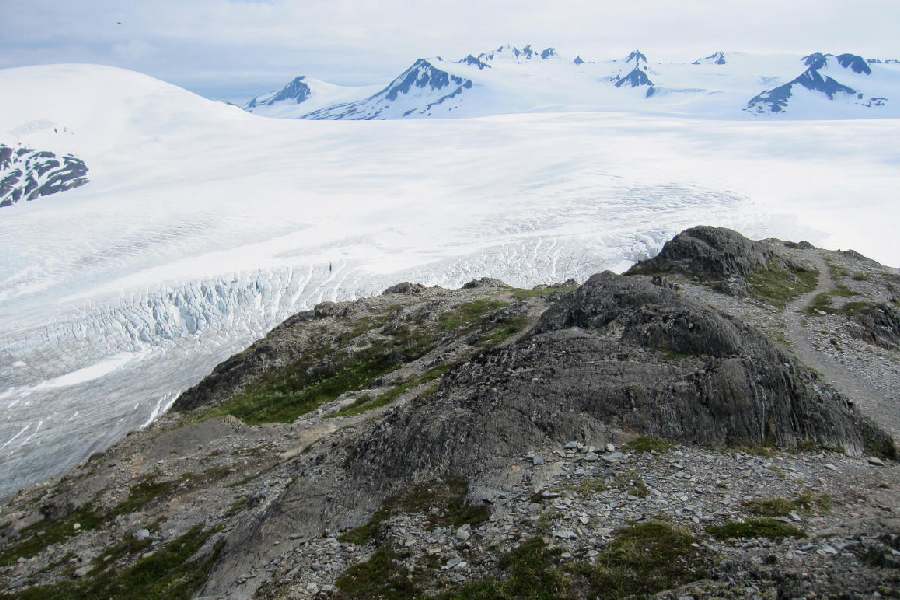One of North America’s largest areas of interconnected glaciers is melting twice as quickly as it did before 2010, a team of scientists said Tuesday, in what they called an “incredibly worrying” sign that land ice in many places could disappear even sooner than previously thought.
The Juneau Ice Field, which sprawls across the Coast Mountains of Alaska and British Columbia, lost 1.4 cubic miles of ice a year between 2010 and 2020, the researchers estimated. That’s a sharp acceleration from the decades before, and even sharper when compared with the mid-20th century or earlier, the scientists said. All told, the ice field has shed one-quarter of its volume since the late 18th century, which was part of a period of glacial expansion known as the Little Ice Age.
As societies add more and more planet-warming carbon dioxide to the atmosphere, glaciers in many areas could cross tipping points beyond which their melting speeds up rapidly, said Bethan Davies, a glaciologist at Newcastle University in England who led the new research.
“If we reduce carbon, then we have more hope of retaining these wonderful ice masses,” Davies said. “The more carbon we put in, the more we risk irreversible, complete removal of them.”
The scientists’ findings were published on Tuesday in the journal Nature Communications. The fate of Alaska’s ice matters tremendously for the world. In no other region of the planet are melting glaciers predicted to contribute more to global sea-level rise this century.
The Juneau Ice Field covers 1,500 square miles of rugged landscape north of Juneau, the state capital. The region has become warmer and rainier over the past half-century, which means a longer melt season for glaciers and less snow to replenish them.
The ice field includes 1,050 glaciers. Or at least it did in 2019.
To reconstruct how the ice evolved in the preceding two-and-a-half centuries, Davies and her colleagues combined decades of glacier measurements with information from satellite images, aerial photographs, maps and surveys. They looked at studies of tree rings and peat to understand the past environment. They also went out on the ice themselves to double-check what they saw from the satellites.
The changes they’ve uncovered are sweeping.
Every one of the ice field’s glaciers receded between 1770 and 2019, the scientists found. More than 100 glaciers disappeared entirely. Nearly 50 new lakes formed as glaciers melted and the water pooled.
The scientists also found that the rate at which the ice field lost volume slowed somewhat in the middle of the 20th century. It picked up after 1979, then accelerated further after 2005.
This quickening, the scientists said, might have to do with the way the whiteness of the ice — its albedo, as glaciologists call it — affects melting and vice versa. As snowfall decreases, more rocks and boulders in the ice are exposed.
New York Times News Service











